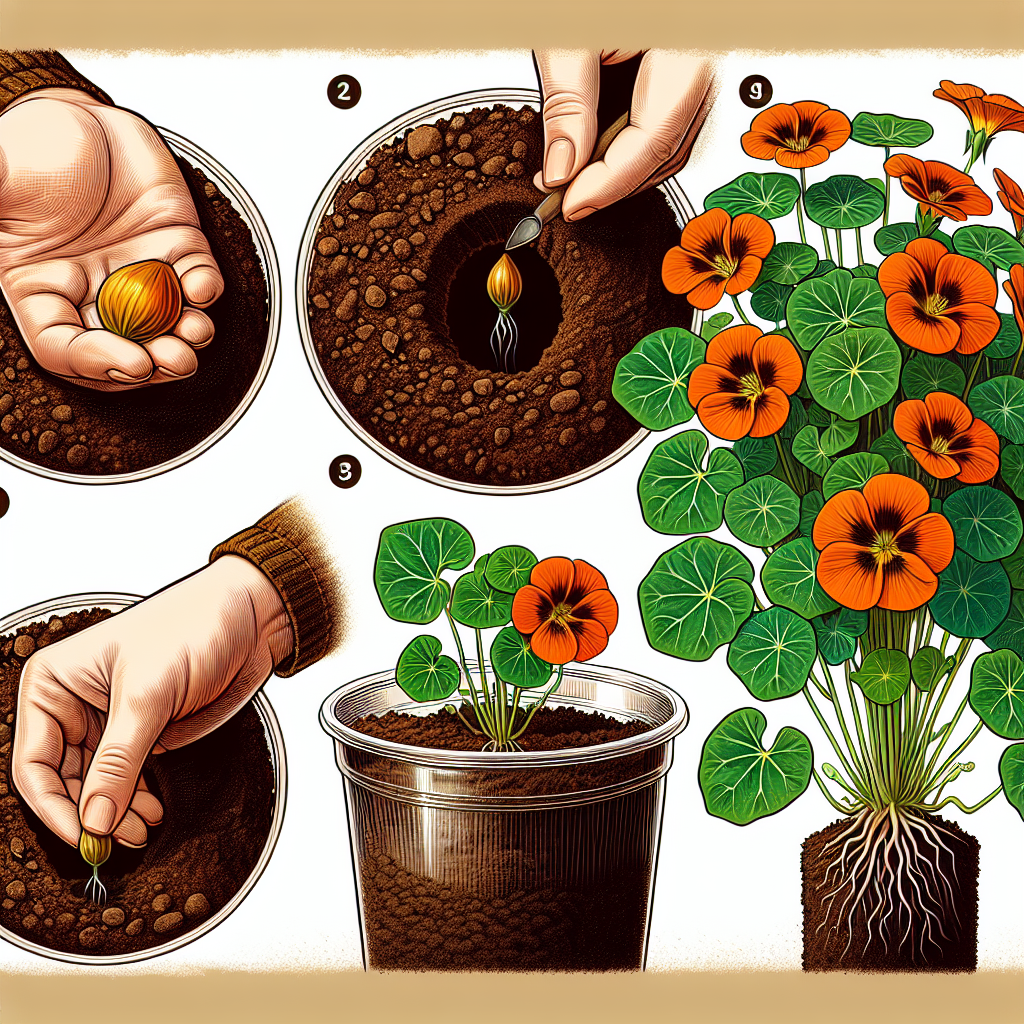
How to plant nasturtium seeds
How to Successfully Plant Nasturtium Seeds
Nasturtiums are beloved for their vibrant flowers and edible leaves. Perfect for beginners and seasoned gardeners alike, they are resilient and add a splash of color to any garden. In this guide, we'll explore how to plant nasturtium seeds, ensuring that you achieve a flourishing display of these beautiful plants in your garden.
Understanding Nasturtium: An Overview
Nasturtiums belong to the family Tropaeolaceae, with the common species being Tropaeolum majus. They are annual plants native to Central and South America, prized not only for their ornamental appeal but also for their peppery taste, which adds a unique flavor to salads and dishes. Here are some key points about nasturtiums:
- Varieties: Nasturtiums come in several varieties, including trailing, bush, and compact forms, each suitable for different spaces.
- Color Range: Their flowers bloom in vibrant shades of orange, red, yellow, and cream.
- Growing Conditions: Nasturtiums thrive in moderate soil and prefer areas with full sunlight.
Choosing the Right Location for Planting
Before you embark on your journey of learning how to plant nasturtium seeds, it's crucial to select the right location in your garden or yard. Here are factors to consider:
- Sunlight: Nasturtiums love the sun, so choose a spot that receives at least 6 hours of direct sunlight per day.
- Soil Drainage: Well-drained soil is essential to prevent root rot. Avoid areas that puddle after rain.
- Space: Provide enough space for the plants to spread, particularly for trailing varieties that may spill over beds or containers.
Preparing the Soil for Nasturtium Seeds
Soil preparation is a fundamental step in ensuring a successful garden. Here’s how to get started:
- Testing Soil: Check the pH level of the soil. Nasturtiums thrive in slightly acidic to neutral pH (around 6.0 to 7.0).
- Amending the Soil: If your soil is heavy clay or very sandy, consider mixing in compost to improve texture and nutrient content.
- Tilling: Loosen the soil to a depth of about 12 inches to ensure proper root aeration and water absorption.
How to Plant Nasturtium Seeds
Now that you have prepared your soil and chosen the right location, let’s dive into the practical steps on how to plant nasturtium seeds:
When to Plant
The best time to plant nasturtium seeds is in the spring after the last frost. For regions with mild winters, you can also get away with planting in early fall.
Steps to Plant Nasturtium Seeds
- Seed Preparation: Soak the seeds in water for about 12 hours before planting. This helps to soften the outer shell, allowing for quicker germination.
- Spacing: Plant seeds about 1 inch deep, spaced 10-12 inches apart for bush types. Trailing varieties should be planted further apart, around 12-18 inches.
- Planting: Dig small holes in the prepared soil, place a seed in each hole, and cover lightly with soil. Water gently to settle the soil around the seeds.
Caring for Nasturtium Plants
Once you have planted your nasturtium seeds, provide ongoing care to ensure healthy growth. Here are essential care tips:
- Watering: Water the plants regularly, particularly during dry spells, but avoid over-watering, as nasturtiums prefer slightly dry conditions.
- Fertilizing: Generally, nasturtiums do not require much fertilization. If your soil is poor, you can apply a balanced fertilizer at the beginning of the growing season.
- Pest Control: Keep an eye out for aphids and caterpillars. These can be controlled organically with insecticidal soap or neem oil.
Promoting Healthy Growth
Encouraging your nasturtium plants to thrive can involve a few extra steps:
- Pruning: Regularly pinch back the tips of the plants to promote bushier growth and fuller flowering.
- Companion Planting: Nasturtiums make excellent companion plants. They can deter aphids and other pests from attacking tomatoes, cucumbers, and brassicas.
- Mulching: Apply a layer of mulch to retain moisture and suppress weeds, ensuring the plants have access to nutrients without competition.
Harvesting and Utilizing Nasturtiums
Once your nasturtiums have fully bloomed and produced leaves, you can start to utilize them in your kitchen:
- Leaves: Harvest leaves as needed; they have a peppery flavor and add zest to salads, sandwiches, and garnishes.
- Flowers: The vibrant flowers are not only edible but also serve as beautiful garnishes for dishes and cocktails.
- Seed Pods: Unripe seed pods can be pickled and used as a substitute for capers.
Potential Issues and Solutions
Sometimes nasturtiums may face issues that hinder their growth. Here are a few common problems and solutions:
| Issue | Symptoms | Solution |
|---|---|---|
| Aphids | Sticky residue on leaves, curled leaves | Use insecticidal soap or neem oil for control. |
| Powdery Mildew | White powdery spots on leaves | Ensure good air circulation and avoid overhead watering; treat with fungicide if severe. |
| Leaf Spot | Brown spots on leaves | Remove affected leaves and space plants adequately; avoid watering foliage. |
Conclusion
In summary, nasturtiums are not only charming and colorful additions to any garden but also versatile in the kitchen. Now that you’ve learned how to plant nasturtium seeds and care for them, you can look forward to enjoying their beauty and edible qualities all season long. Whether you choose to plant them in your garden, container, or as companions to other plants, these resilient flowers will surely enhance your gardening experience. Embrace the joy of gardening, and let your nasturtiums flourish!
By Guest, Published on August 26th, 2024